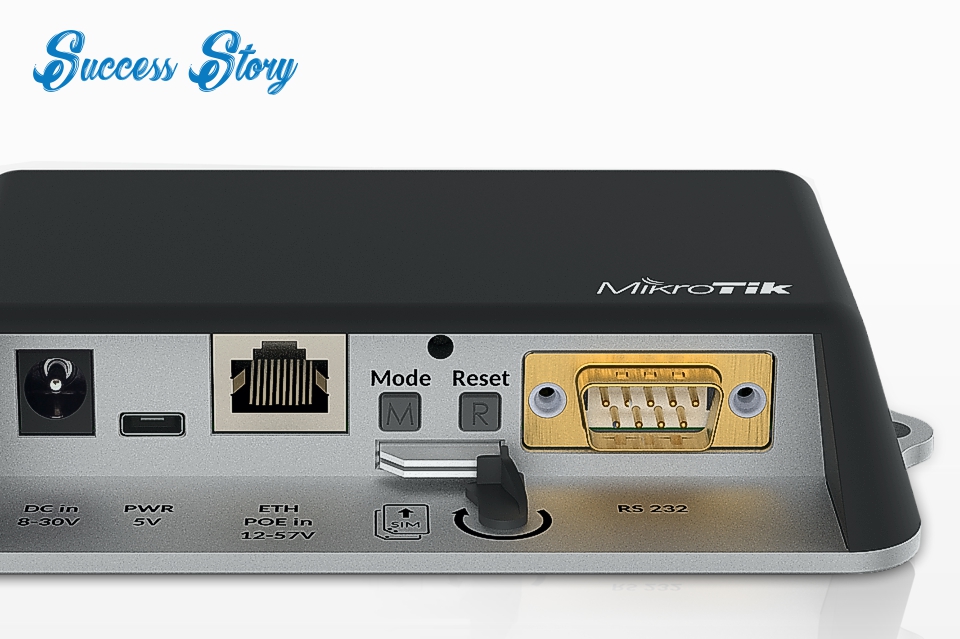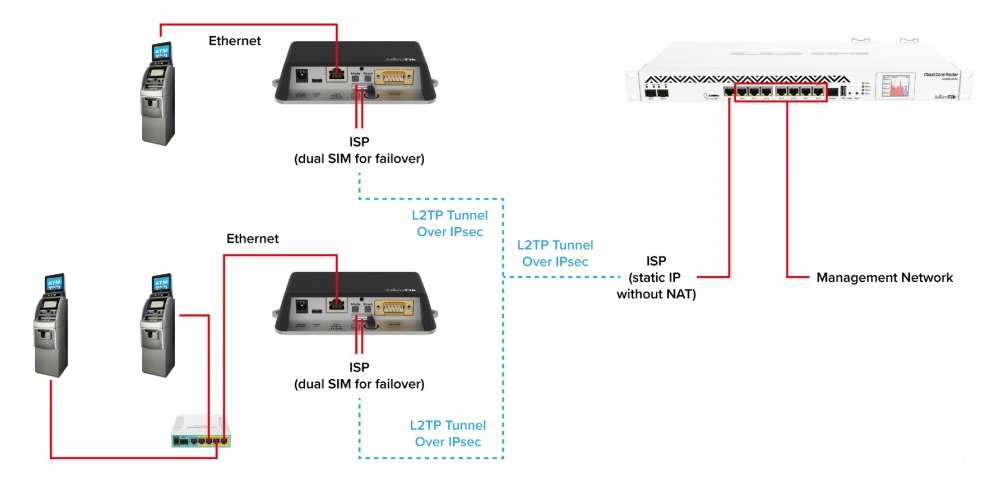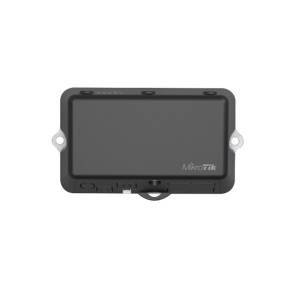
Techno Trade from Uzbekistan had a contract to upgrade the ATM network of a major banking company. The main task was to connect 50 ATMs to the central office. All ATMs were supposed to receive Internet via 3G/LTE and use an encrypted channel to form a single network.
Here’s what they did.
The project was carried out using a VPN tunnel. For this setup, we used 50 MikroTik LtAP mini LTE kits as VPN clients. As for the VPN server – we used a CCR1036-8G-2S+. The diagram shows that we used L2TP with IPsec for the VPN network.

An L2TP VPN server with IPsec was configured on the main router. VPN clients with two SIM cards (from different mobile operators) were installed on MikroTik LtAP mini LTE within the ATMs. If the SIM1 would suddenly lose connection, SIM2 from the other carrier would provide it.
Always satisfying to see a well-thought-out project with failovers. Better safe than sorry!
It is a perfect solution for real-time tracking. MikroTik has provided a simple tracking application example in the RouterOS documentation to help you get started.
RB912R-2ND-LTM – LtAP mini with 650 MHz CPU, 64 MB RAM, 1x LAN:
The LtAP mini LTE kit is a small waterproof wireless access point.
Connect to the LtAP minis built-in 802.11b/g/n wireless and access the LTE network from your phone or any other wireless device. The LtAP mini LTE also has one 10/100 Ethernet LAN port for your wired devices. The RS232 serial port gives you console access for debugging.
LtAP mini has a special enclosure with a wall mounting kit, two SIM slots to alternate between cellular providers, and integrated GPS support, making this a perfect device for use in moving vehicles like cars, buses or trains. External GPS antenna is available for ordering separately (not included, product code GPSANT).
The LTE card is connected to two internal antennas with u.FL connectors, so if you want, you can unplug the connectors and add your own external LTE antenna for better coverage. The unit has several powering options: 9-30 V PoE-in by Ethernet port, DC jack and microUSB.
Use the built in GPS module to track the location of your vehicle in real time, MikroTik has even provided a simple tracking application example in the RouterOS documentation to help you start development of your platform.
Specifications
- Product code: RB912R-2nD-LTm
- CPU: QCA9531 650 MHz
- Size of RAM: 64 MB
- Storage: 16 MB
- 10/100 Ethernet ports: 1
- Wireless: Built-in 2.4 GHz 802.11b/g/n, dual-chain
- Wireless chip model: QCA9531
- Wireless regulations: Specific frequency range can be limited by country regulations
- Antenna beam width: 360°
- Wireless antenna gain: 1.5 dBi
- GPS: Built-in MT3337V, with uUFL RF connector and active antenna support
- PoE in: Yes
- SIM slot: 2 Mini SIM slots
- LTE modem: None (slot for miniPCI-e LTE card available)
- LTE category: –
- 3G category: –
- 2G category: –
- LTE antenna gain: 3.5 dBi (with uFL connector)
- Serial port: RS232 (shared with GPS port)
- Supported input voltage:
- PoE in: 10 – 57 V (passive PoE and 802.3af/at with unshielded cable)
- DC jack: 8 – 30 V
- MicroUSB: 5 V
- Dimensions: 139 x 77 x 28,5 mm
- Operating temperature: -40°C to +70°C tested
- License level: 4
- Operating system: RouterOS
- Max. power consumption: 4 W

